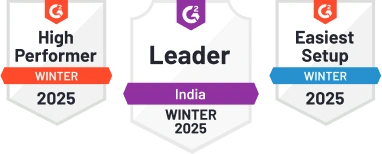Grab a chance to avail 6 Months of Performance Module for FREE
Book a free demo session & learn more about it!
-
Will customized solution for your needs.
-
Empowering users with user-friendly features.
-
Driving success across diverse industries, everywhere.
Grab a chance to avail 6 Months of Performance Module for FREE
Book a free demo session & learn more about it!
Superworks
Modern HR Workplace
Your Partner in the entire Employee Life Cycle
From recruitment to retirement manage every stage of employee lifecycle with ease.



Seamless onboarding & offboarding
Automated compliance & payroll
Track performance & engagement
Cost Accountant KRA/KPI
- Key Responsibility Areas (KRA) & Key Performance Indicators (KPI) for Cost Accountant
- 1. Financial Analysis and Reporting
- 2. Cost Control and Budget Management
- 3. Inventory Management
- 4. Costing and Pricing Analysis
- 5. Compliance and Audit Support
- Real-Time Example of KRA & KPI for Cost Accountant
- Cost Accountant at Company X
- Key Takeaways
Key Responsibility Areas (KRA) & Key Performance Indicators (KPI) for Cost Accountant
1. Financial Analysis and Reporting
KRA: Responsible for analyzing financial data and preparing reports to provide insights for decision-making.
Short Description: Analyzing financial data for strategic decision-making.
- 1. Accuracy of financial reports
- 2. Timeliness in report submission
- 3. Variance analysis proficiency
- 4. Adherence to reporting standards
2. Cost Control and Budget Management
KRA: Managing costs effectively and ensuring adherence to budgetary constraints.
Short Description: Controlling costs and optimizing budget allocation.
- 1. Cost reduction initiatives implementation
- 2. Budget variance analysis
- 3. Budget compliance rate
- 4. Cost-saving measures identification
3. Inventory Management
KRA: Overseeing inventory levels, valuation, and accuracy to support operational efficiency.
Short Description: Managing inventory for operational efficiency.
- 1. Inventory turnover rate
- 2. Inventory holding costs reduction
- 3. Inventory accuracy levels
- 4. Just-in-time inventory management effectiveness
4. Costing and Pricing Analysis
KRA: Conducting cost analysis and pricing strategies to optimize profitability.
Short Description: Analyzing costs and setting optimal prices.
- 1. Profit margin improvement
- 2. Pricing strategy effectiveness
- 3. Costing accuracy levels
- 4. Competitor pricing analysis proficiency
5. Compliance and Audit Support
KRA: Ensuring compliance with financial regulations and providing support during audits.
Short Description: Ensuring financial compliance and audit readiness.
- 1. Audit findings resolution rate
- 2. Compliance with regulatory requirements
- 3. Internal control effectiveness
- 4. Audit preparation efficiency
Real-Time Example of KRA & KPI for Cost Accountant
Cost Accountant at Company X
KRA: Managing cost control measures, the Cost Accountant at Company X implemented a cost reduction strategy that led to a 15% decrease in overall operational expenses.
- KPI 1: Percentage reduction in operational costs
- KPI 2: Budget variance rate improvement
- KPI 3: Inventory holding cost reduction percentage
- KPI 4: Compliance with audit recommendations
This proactive approach resulted in improved financial performance and operational efficiency.
Key Takeaways
- KRA defines what needs to be done, whereas KPI measures how well it is done.
- KPIs should always be SMART (Specific, Measurable, Achievable, Relevant, Time-bound).
- Regular tracking and adjustments ensure success in the role of a Cost Accountant.
Content is structured to provide clear, concise, and measurable KPIs for professional readability.




